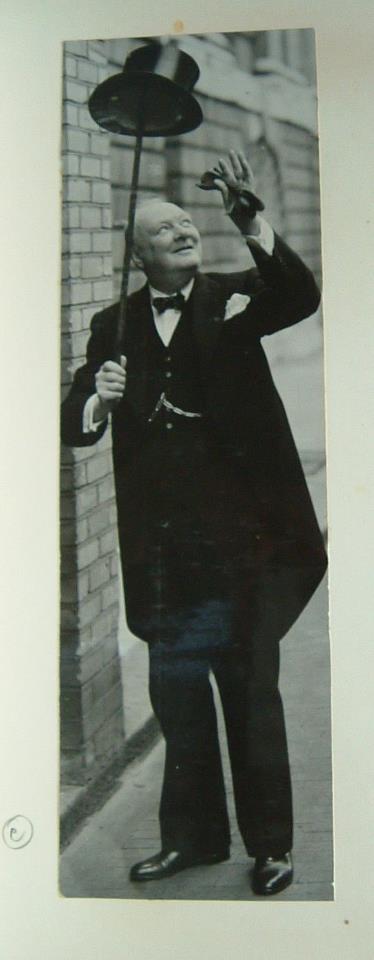Harry Benson, well known photographer of both presidents and pop icons — he accompanied the Beatles on their first trip to the U.S. — was recalling his long career recently when he mentioned something that troubled him: When he mentions Winston Churchill, young people don’t know who he is.
 He’s not the first to notice: A few years ago, a poll in Britain turned up the startling fact that a fifth of teenagers there thought Churchill was a fictional character — even while majorities believed that Sherlock Holmes, King Arthur and Robin Hood were real. Another study of Britons of all ages showed that while Churchill still tops the ranks of those considered to be most significant in history, Princess Diana, John Lennon and Michael Crawford are not far behind.
He’s not the first to notice: A few years ago, a poll in Britain turned up the startling fact that a fifth of teenagers there thought Churchill was a fictional character — even while majorities believed that Sherlock Holmes, King Arthur and Robin Hood were real. Another study of Britons of all ages showed that while Churchill still tops the ranks of those considered to be most significant in history, Princess Diana, John Lennon and Michael Crawford are not far behind.
Now imagine the results of a poll conducted outside of Britain.
This is relevant, in particular, to the Morgan Library & Museum — now showing Churchill: The Power of Words. The exhibit includes items ranging his childhood letters to his parents, to Cold War correspondence with President Eisenhower, to drafts and recordings of his famous wartime oratory. How to engage those young people?
To the web! The Morgan, along with the Churchill Archives Centre at the at the University of Cambridge, created a website called DiscoverChurchill.org and are using Twitter and Facebook.
The website begins with a trailer, a takeoff on the popular Dos Equis beer ad about the world’s most interesting man — a fictional character — and sequeing into the idea that Churchill is the actual guy.
“A REAL MAN…A man who… lacked ambition (according to his first headmaster)…but went on to lead his nation in a time of great crisis…a man who…won the Nobel Prize in Literature…” Etc.
Elsewhere there are links to video clips of Churchill’s most famous speeches, 24 rotating quotes (Sample: “We are all worms. But I do believe I am a glow worm.”), and lists of places to go, things to see and do, and other websites related to Churchill, including Bletchley Park, where the Enigma code was cracked. There are linkups to pop culture — e.g., that Angelina Jolie paid tribute to Churchill in tattoos she added for her role in “Wanted.”
“The site is intended to be a portal, open wide enough to draw people in from many different backgrounds, and then designed to channel them to the most interesting Churchill sites and to encourage them to visit the exhibition,” Allen Packwood, director of the Churchill Archives Centre at the at the University of Cambridge, told me. “We wanted to establish a clear beacon for anyone who might be interested and we wanted to experiment to see if an integrated social media strategy, with web resources, Facebook and Twitter, could be used to stimulate interest among new audiences.”
Admirable, but — I don’t think it’s working very well. As of this writing, the Facebook page they created page has only 1,222 likes — how many of them are Millennials? The site is asking trivia questions — those who post the right answer first win tickets to the exhibition — without much traffic. Its Twitter feed has 109 followers.
I’m no expert on what attracts Millennials, but I think the sites are too direct, too earnest. Marketers always say young people are skeptical of direct pitches. I wonder if, instead of tweeting “Discover Churchill â€@DiscvrChurchill –#ChurchillNYC Don’t miss it. http://discoverchurchill.org Exhibition is limited (now till Sept. 23),” the tweets should be the man’s own quotes.
Churchill’s words—powerful, humorous, clever— still resonate nearly fifty years after his death. That’s the point of the exhibition. I am reminded of the Massachusetts Historical Society, which in 2009 began posting one-line-a-day from the diaries of John Quincy Adams on Twitter. It kept people coming back to see the next line. Just a thought.
The Churchill exhibition runs through September 23.
Photo Credit: Courtesy of DiscoverChurchill.org
